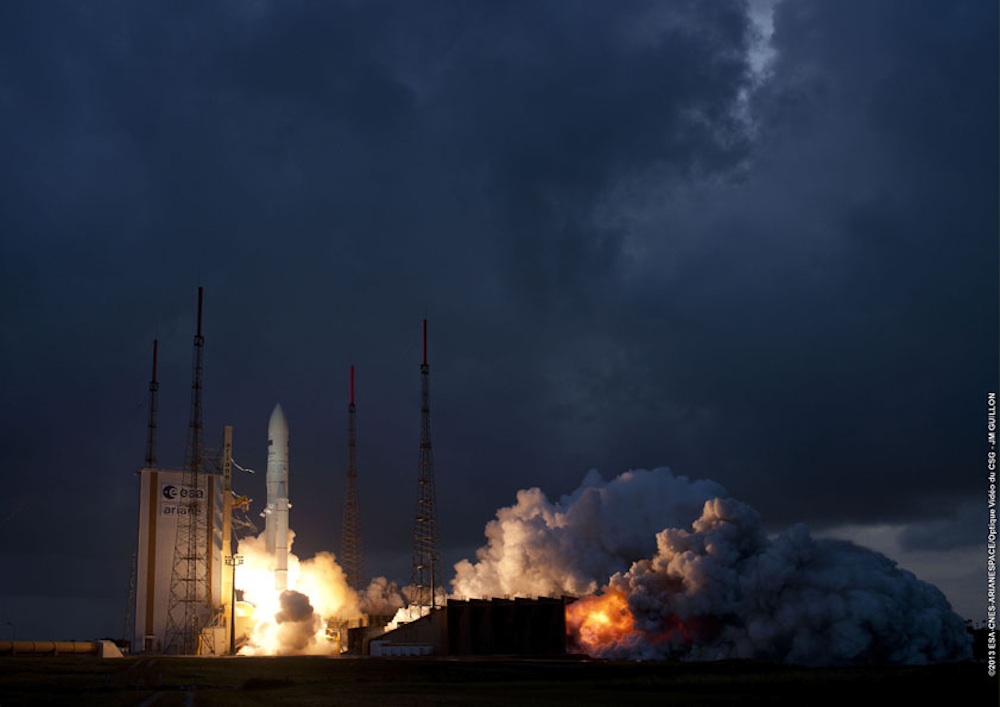
A massive European rocket launches into darkening skies over tropical South America in this stunning photo.
The Ariane 5 rocket, operated by French-based firm Arianespace, blasted off from French Guiana around dusk on Feb. 7 carrying telecommunications satellites for two different clients.
The launch successfully delivered to orbit the Amazonas-3 satellite for Spanish company Hispasat and a spacecraft called Azerspace/Africasat-1a, which will be run by the Azerbaijan Ministry of Communications and Information Technologies and the firm Azercosmos 0JSC.
Azerspace/Africasat-1a will provide a range of telecom services to Azerbaijan, Central Asia, the Middle East, Africa and Europe, Arianespace officials said.
The Feb. 7 liftoff was the 68th total for the Ariane 5 and marked its 54th successful launch in a row.
The Ariane 5 heavy lifter is about 165 feet (50 meters) tall. It can boost 10 metric tons to geostationary transfer orbit (GTO) and about twice that much to low-Earth orbit, officials said. The Feb. 7 launch delivered about 10.3 metric tons to GTO, or roughly 22,750 pounds.
The next Ariane 5 flight is slated for this coming June. On that mission, the rocket will launch the European Space Agency's Automated Transfer Vehicle 4 — an unmanned cargo ship named "Albert Einstein" — toward the International Space Station.
Get the Space.com Newsletter
Breaking space news, the latest updates on rocket launches, skywatching events and more!
Follow Mike Wall on Twitter @michaeldwall. Follow us @Spacedotcom, Facebook or Google+. Originally published on SPACE.com.
Join our Space Forums to keep talking space on the latest missions, night sky and more! And if you have a news tip, correction or comment, let us know at: community@space.com.

Michael Wall is a Senior Space Writer with Space.com and joined the team in 2010. He primarily covers exoplanets, spaceflight and military space, but has been known to dabble in the space art beat. His book about the search for alien life, "Out There," was published on Nov. 13, 2018. Before becoming a science writer, Michael worked as a herpetologist and wildlife biologist. He has a Ph.D. in evolutionary biology from the University of Sydney, Australia, a bachelor's degree from the University of Arizona, and a graduate certificate in science writing from the University of California, Santa Cruz. To find out what his latest project is, you can follow Michael on Twitter.









